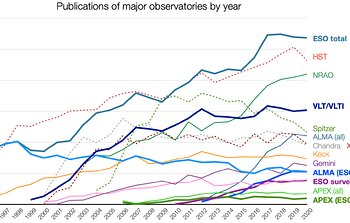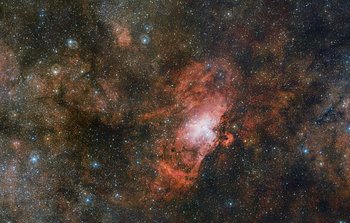When Betelgeuse, a bright orange star in the constellation of Orion, became visibly darker in late 2019 and early 2020, the astronomy community was puzzled. A team of astronomers have now published new images of the star’s surface, taken using the European Southern Observatory’s Very Large Telescope (ESO’s VLT), that clearly show how its brightness changed. The new research reveals that the star was partially concealed by a cloud of dust, a discovery that solves the mystery of the “Great Dimming” of Betelgeuse.
The release, images and videos are available on:
https://www.eso.org/public/news/eso2109/
Kind regards,
The ESO Department of Communication
16 June 2021

|
11 June 2021: Preparations are being put in place to resume construction work on ESO’s Extremely Large Telescope (ELT) at Cerro Armazones in Chile, following disruption due to the COVID-19 pandemic, which ...
|
| Read more |

|
1 June 2021: Today, ESO signed an agreement with an international consortium to build and operate MAVIS, a unique instrument to be installed on ESO’s Very Large Telescope (VLT) that will provide ...
|
| Read more |

|
20 May 2021: ESO observatories operated under challenging conditions in 2020 due to the unprecedented COVID-19 pandemic, having to reduce and even pause scientific observations for a few months. Nonetheless, 2020 was still ...
|
| Read more |

|
Thea Elvin
4 June 2021: Next week, the VLT Survey Telescope (VST), located at ESO’s Paranal Observatory in the Chilean Atacama Desert, celebrates its tenth birthday. The anniversary marks ten years since the telescope’s “first ...
|
| Read more |

|
Juan Carlos Muñoz Mateos
21 May 2021: Astronomers have discovered thousands of exoplanets –– planets orbiting stars other than the Sun. When looking for the chemical fingerprints that life might have left in the atmospheres of these ...
|
| Read more |
|
|
|
|